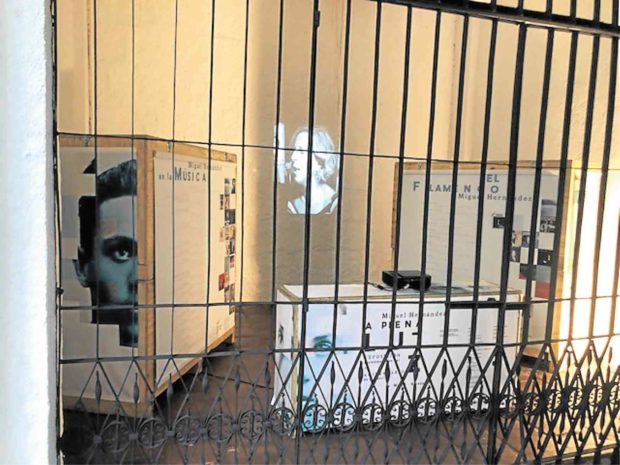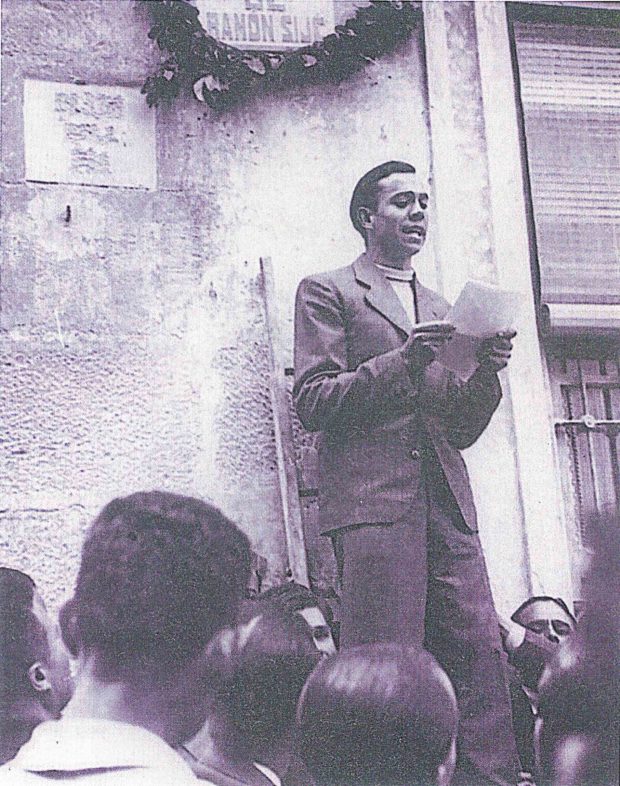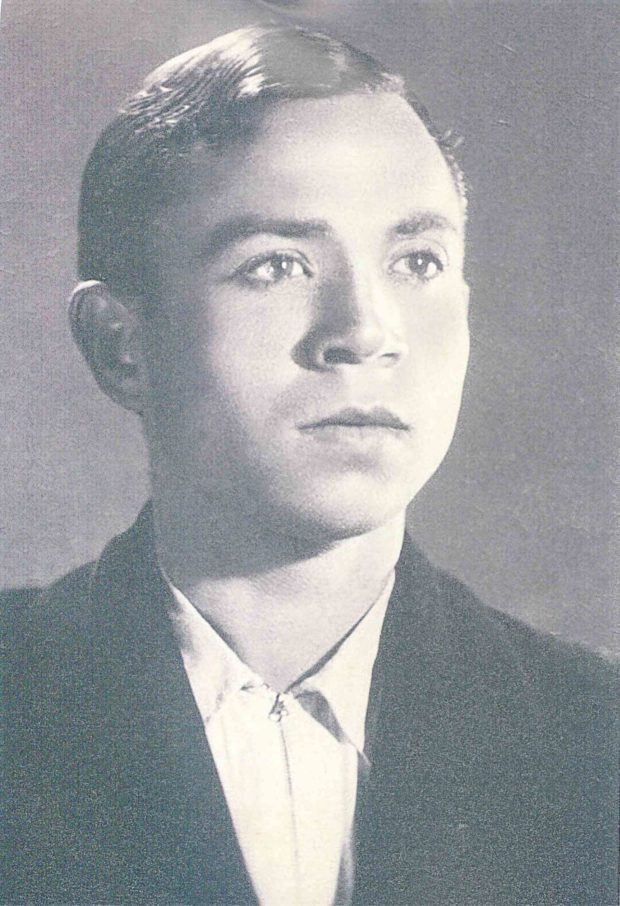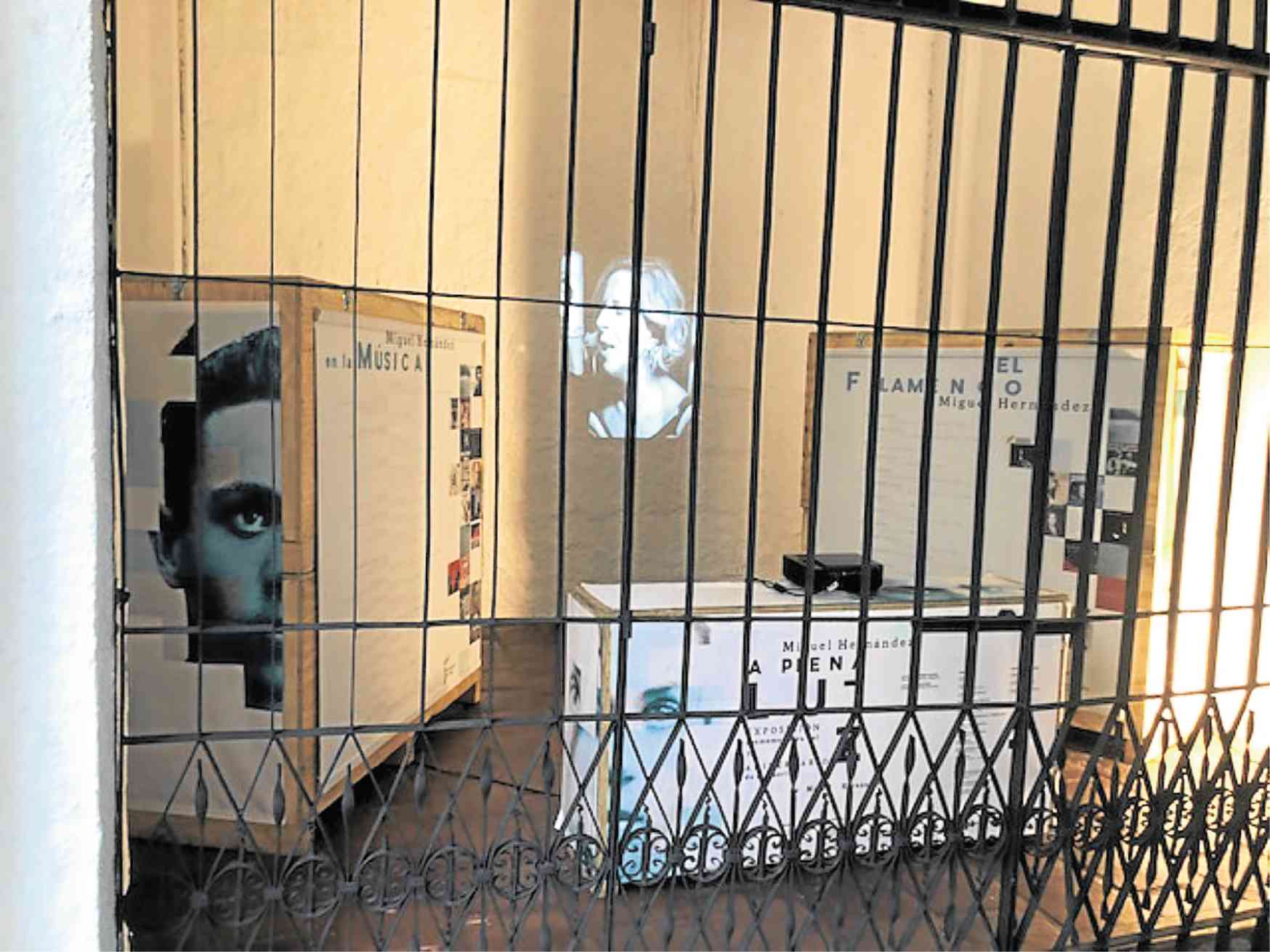
Filipinos have until Sept. 16 to see the important international touring exhibit, “Miguel Hernández, A Plena Luz,” at the Instituto Cervantes de Manila’s new branch on Plaza San Luis across San Agustin Church in Intramuros.
It is an important exhibit because it trains the spotlight on—or in the English translation of the exhibit’s title, casts “in the fullness of light”—
someone who’s probably the most significant poet of the Spanish civil war, barring none, even Federico Garcia Lorca (1898-1936), who’s much, much better known to Filipinos.
Miguel Hernández (1910-1942) was a poet and playwright who joined the Republican and communist forces during the Spanish civil war. Arrested after the nationalist victory, he died of tuberculosis in prison.
Paying homage to him were the who’s-who of global Spanish poetry, including future Nobel laureates such as the Spaniard Vicente Aleixandre (1898-1984), Mexican Octavio Paz (1914-1998) and Chilean Pablo Neruda (1904-1973).
“A plena luz” in fact comes from the eulogy of the Chilean bard: “Recordar a Miguel Hernández que desaparecio en la oscuridad y recordario a plena luz, es un deber de Espana, un deber de amor.” This is translated in English in the highly informative and well-graphically illustrated exhibit catalog as—“Remembering Miguel Hernández, who disappeared in darkness, and remembering him in broad daylight, is a duty of Spain, a duty of love.”
Hernández was a more significant poet than Lorca as far as the civil war was concerned because he was organic. He came from Orihuela in Alicante province in the south of Spain. His father stopped him from going to school so he could shepherd the family’s herd.
When he presented himself to Aleixandre in Madrid, the “pitifully poor” (Lorca’s Irish biographer Ian Gibson’s words) Hernández identified himself as a “shepherd of Orihuela.”
Owing to his rustic background, Hernández wrote poetry that retained its unabashed and unaffected pastoral resonance even when treating the harsher realities of revolution and war.
Lorca mined folk poetry in “Romancero Gitano” (Gypsy Ballads) but the stylization of “local color” was just one of the many devices from the modernist’s bag of tricks. In contrast, Hernández made his poetic progress from the traditional to the modern without any hint of what T. S. Eliot would call as “dissociation of sensibility.”
Beginnings
Hernández’s literary beginnings were marked by religiosity and his literary education was largely self-taught, based on the classics of the Spanish Siglo de Oro. His first literary mentor was the Catholic poet Ramon Sije (1910-1935).
Hernández would go to Madrid later to try his luck as a poet. There he personally met Aleixandre, Lorca and other poets of the Generation of 1927, the famous modernist movement in Spanish letters.

He had been disappointed before when the Granada poet didn’t review his first book of poems, “Perito en Lunas” (Expert in Moons), published in 1933. Lorca wrote Hernández later an encouraging letter, but he avoided meeting the ruggedly handsome young man from Orihuela, as attested by Aleixandre.
Was there sexual tension between Lorca and Hernández?
Hernández abandoned his childhood faith (in the process estranging himself from Sije) and signaled it with his 1936 book, “El Rayo que no Cesa” (Lightning Without End). The poetry is filled with organic images but expressed in the tension of eroticism, as in the title poem: “Will this lightning never end, that fills/ my heart with exasperated wild beasts/ and furious forges and anvils/ where even the freshest metal shrivels?” (translation by Don Share)
During the civil war, he published “Viento del Pueblo” (Wind of the People) and “El Hombre Acecha” (The Man Who Lurks), In prison, he would write his most famous poem, “Nanas de la Cebolla” (Lullaby of the Onion). Told by his wife with their newborn son that she was subsisting on bread and onion, he addressed the poem to him and imagined him being suckled: “Fly away, son, on the double/ moon of the breast:/ it is saddened by the onion,/ you are satisfied./ Don’t let go …” (translation by Don Share)
After he died, prison mates found out that the Shepherd from Orihuela had scribbed on the wall above his cot his last poem: “Goodbye, brothers, comrades, friends,/ let me take my leave of the sun and the fields.”
Two Spains
Hernández is a more significant poet than Lorca because in himself and his oeuvre resided the “two Spains” (according to the poet Antonio Machado) that most Filipinos are ignorant of—the traditional, Catholic Spain, and the modern, often anti-Catholic, Spain with all the “shock of the new” that comes with modernity.
Lorca was killed by the nationalists at the start of the civil war for reasons that have divided biographers and historians till now. It now appears he was—in Gibson’s biography— “assassinated”—for a complex of reasons such as his alleged communist sympathies, his homosexuality, and even alleged rivalry between Falangist and other rightist groups.
Lorca’s execution was a blot on the record of the Nationalists so that when Hernández was sentenced to execution, Franco, not wanting another Republican martyr, commuted the sentence. Hernández didn’t survive harsh prison life and died in Alicante on March 28, 1942.
Jaén
Organized by the Diputación de Jaén (Provincial Government of Jaén), the exhibition is in commemoration of the 75th death anniversary of the poet in 2017.
Jaén through the Instituto de Estudios Giennenses safeguards the literary and personal memorabilia of the poet that had been endowed it by Hernández’s widow, Josefina Manresa, who was born in Quesada, Jaén.

Curated by Juan José Téllez, director of the Centro Andaluz de las Letras (Jaén belongs to the larger “autonomous community of Andalucia”), “A Plena Luz” has toured London, Manchester, New York, Chicago and Dublin. After Manila, the only Asian city in the tour, the exhibit will head to Toulouse and Paris.
The exhibit is governed by 10 themes: “Genesis, Religion, Ideology, Literature, Love, Eros, War, Jail, Death, Resurrection.”
But museumgoers are advised to further check out the catalog, where the chapter on Eros also includes a discussion on Hernández’s “La Masculinidad” (Quite ironic that the the feminine Spanish article is used for masculinity!) Madrid women reportedly were attracted from the “newcomer from Orihuela” and the “rustic man accustomed to wearing espadrilles.”
Moreover, Hernández “in opposition to the homosexual nucleus of the Generation of ’27… not only exhibited his heterosexuality, but he [developed] a certain homophobia that would not go unnoticed in the literary circles of Madrid of the time.”
Perhaps the passage would explain the apparent tension between Lorca and Hernández.
Also on exhibit are popular culture appropriations of the poetry of Hernández, most notably the Catalan singer-songwriter Joan Miguel Serrat’s 1972 global hit album, “Miguel Hernández.”
On Sept. 16 at 4 p.m., Instituto Cervantes in Intramuros will launch the book, “Una querencia tengo por tu acento. Four Filipino Writers in Search of Miguel Hernández,” by Marj Evasco, Vince Groyon, Jessica Zafra and Lito Zulueta.
Leading the ceremonies is Luis Garcia Montero, director general of Instituto Cervantes in Madrid.
Visit www.manila.cervantes.es or www.facebook.com/InstitutoCervantesManila.













































